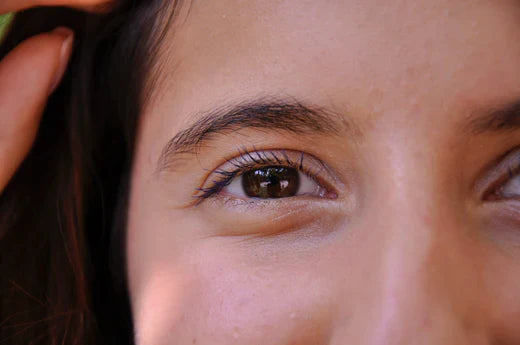In This Post
- Can You Use Plasma Pen on Dark Skin?
- What Skin Tones Does Plasma Pen Work Best For?
- What Happens if Darker Skin Types Use Plasma Pen Treatment?
- Why Doesn’t Plasma Pen Work on Dark Skin?
- Other Skincare Solutions for Dark Skin That’s Incompatible With Plasma Pen Therapy
- If Your Fitzpatrick Skin Type is Suitable for Plasma Pen Treatment, Here’s How to Get Started…
You may have read our article explaining the Fitzpatrick skin types and discovered that this type of treatment really only works on lighter skin. So, why doesn't plasma pen work on dark skin? Plasma pen on dark skin is unadvised for a few prominent reasons.
The significant risks associated with treating darker skin types with plasma pen treatment is that it can result in hyperpigmentation, hypopigmentation, and possible scarring. However, these skin damage concerns can be readily avoidable by deterring individuals with darker skin types from administering plasma pen treatment.
That’s why in this article, we’ll be detailing how to determine if your skin type is ideal for plasma pen treatment, why darker skin types are not, and other procedures that are safer to use on these darker skin types in place of plasma pen treatment.
Can You Use Plasma Pen on Dark Skin?
Regarding this viral skin blemish treatment, who is the fibroblast plasma pen not good for? Also, is plasma pen safe to be used on dark skin?
It’s essential to be aware of plasma pen dangers to avoid potential damage to the skin. One of the most prominent methods to deter the risks of plasma pen treatment, like scarring, is determining whether your skin is safe for treatment. The Fitzpatrick skin type scale is commonly used to distinguish which skin types are safe for plasma pen therapy, as plasma pen on dark skin is risky. On the scale, darker skin types are labeled Type IV, Type V, and Type VI.
These skin types are unsafe for plasma pen treatment as they are at severe risk of some associated dangers. We will discuss more in-depth what these risks are within this article below.
What Skin Tones Does Plasma Pen Work Best For?
We can determine which skin tones are best for plasma pen treatment using the Fitzpatrick skin type scale.
On the scale, the ideal candidates for plasma pen treatment include Type I, Type II, and Type III. The scale details what classifies these skin types. For example, Type I is the palest. Someone with Type I skin always burns when exposed to the sun and never tans. They are more likely to have freckles too. Type II skin is lightly colored, though darker than Type I. This skin type usually burns, though it can achieve a slight tan. And the last ideal candidate on the spectrum for plasma pen treatment is Type III, noted by an olive or golden honey skin tone. This skin type will occasionally receive mild burns when exposed to the sun’s rays, though they may typically tan.
These skin types can safely undergo treatments, like plasma pen mole removal, and enjoy the benefits of fibroblast before and after stomach tightening for a non-invasive tummy tuck without the immediate repercussions darker skin types would have.
What Happens if Darker Skin Types Use Plasma Pen Treatment?
There are significant reasons why plasma pen on dark skin is not advised.
Individuals with darker skin types are at a higher risk of hypopigmentation, hyperpigmentation, and potential scarring from plasma pen treatment. Though these concerns are generally harmless, they can affect self-confidence for many. There are methods to rid the skin of these skin damage concerns, but they will come at a hefty price through multiple treatments.
Why Doesn’t Plasma Pen Work on Dark Skin?
So, why doesn't plasma pen work on dark skin?
Plasma pen on dark skin doesn’t work because these darker skin types have melanocytes, which form melanin, responsible for darker pigments, from dark brown to black, of the skin, hair, and the eye's iris. Melanin is what causes the skin to tan when exposed to sunlight.
When the skin is injured, which occurs as micro burns during plasma pen therapy, it can cause the melanocytes to be hypopigmented or hyperpigmented. This reaction is due to the combination of ultraviolet and inflammatory response disrupting the basal cell layer during the inflammatory process. When this occurs, melanin is produced, which can end up confined in the papillary layer by macrophages. After the healing process is complete, the melanin can become trapped in the dermal layer, resulting in pigmentation issues.
Other Skincare Solutions for Dark Skin That’s Incompatible With Plasma Pen Therapy
Other alternatives can be used for individuals who desire to address skin blemish concerns but cannot safely receive plasma pen treatment due to a darker skin type.
Microneedling is an optimal and safe procedure for darker skin tones. This skincare procedure performs microscopic punctures into the dermis to stimulate collagen production. Microneedling is often used to address signs of aging, like wrinkles, target acne scars, and improve skin tone for a replenished appearance.
Another quality option is the Nd: YAG laser technology that uses a wavelength that travels deep into the dermis. This wavelength is optional as it safely circumvents skin pigmentation to avoid affecting melanin in the skin or damage to the epidermis.
If Your Fitzpatrick Skin Type is Suitable for Plasma Pen Treatment, Here’s How to Get Started…
If your Fitzpatrick skin type is ideal for treatment, avoid the hefty plasma pen treatment cost of going into a cosmetologist’s office by purchasing an at-home fibroblast plasma pen for sale!
Dermavel’s plasma pen reviews are out of this world, with elated customers praising the results they’ve achieved. Our at-home fibroblast plasma pen is made with high-quality materials and a guarantee that you’ll snag the skincare goals you’ve always dreamed of! Whether you want to remove skin tags, target wrinkles, or tighten the skin, this plasma pen is a versatile tool that can help address any skin blemish concerns.
On our blog, we teach you how to use a plasma pen and go into detail on the plasma pen healing process day by day, so you know what to expect - like caring for plasma pen scabs. Prioritizing plasma pen aftercare is vital for a speedy recovery post-treatment and can do wonders in preventing possible plasma pen risks and enhancing your plasma pen therapy progress.
If you have more questions, like how long do plasma pen results last and how many plasma pen treatments are needed, check our blog for more information!
Wrapping Up Our Guide on Why Plasma Pen Doesn’t Work on Dark Skins
Why doesn't plasma pen work on dark skin? Simply put, plasma pen on dark skin is unsafe for individuals with Type IV, Type V, and Type VI skin types as they are more susceptible to pigmentation issues. Other skin care procedures, like microneedling, are a safer option for individuals with darker skin types to avoid these risks.
If your skin is Type I, Type II, or Type III, you are an ideal candidate for plasma pen therapy. And with the best plasma pen for at-home treatment whenever, wherever you want, Dermavel can save you money and upgrade your skin’s appearance.
Achieve the skincare goals you’ve always longed for with Dermavel’s at-home plasma pen!





